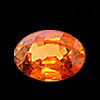Although gemstones, diamonds and jewelry are quite durable, they do need care and regular cleaning. Following a few general rules will make sure that they last for generations so as to always look beautiful, bright and clean so as to be admired.
Why do my diamonds get dirty so fast?
Diamond has an unusual property for a mineral, it repels water this is dues to a Diamond's strong bonding and carbon composition which cause its surface to repel water but to readily accept wax and grease. These two properties provide an effective means of separating diamonds from other minerals in the mining process, but never the less also cause your diamond to need regular cleaning to show of it's brilliance and luster. "Try Original Diamond and Precious Jewelry cleaner it's fantastic".
Why do my Gems look lifeless and tried?
Most Gems require light to reflect and refract through the stone, this acts with the wave lengths of light to produce colors beauty and refraction. If your gem is caked with dirt and grime, even on the back of the stone and under the setting, your gems beauty and transparency is greatly inhibited. "Try Original Diamond and Precious Jewelry cleaner and see your Gems true beauty".
Why does my gold, platinum or silver get dull?
Most Gold jewelry is alloyed with copper, zinc, nickel or silver. Salt in skin acids, and other chemicals picked up in daily life create an oxidizing or tarnishing effect, usually the less pure the gold the more noticeable the tarnish or dullness.
Platinum usually shows the least oxidization or tarnish because of its purity and composition but still gets dirty due to similar factors above.
Silver is tarnished by sulfur-containing materials, particularly hydrogen sulfide. The most common tarnish-causing elements are salt in skin acids, chlorine from swimming pools, wool, felt, foods like eggs, onions plus fossil fuel materials like rubber bands, latex gloves, textiles etc. "Try Original Silver and Gold Polish it makes a real difference naturally"
What can I do?
First of all: keep them clean! Rings in particular tend to collect dust, soap, grit dirt, sweat, food etc behind the stone and settings particularly if you wear them all the time. If you let oxidizations, dirt and grim build up behind your stones this can significantly add to the possibly of weakening the setting and even losing a stone, as the dirt gets between the stone and the setting and grinds away with movement.
To clean most precious gemstones and diamonds simply soak them in Original Diamond & Precious Jewelry cleaner or another trusted brand (non acid based) and then gently scrub clean with the Original Jewelry cleaning brush or other finely soft bristled designed jewelry cleaning brush. If necessary gently scrub behind the stone also, this will brighten your stone beautifully. Directions for cleaning are also noted on each bottle of Original.
Remember
Even the hardest gemstone variety can be vulnerable to breakage, cleavage or fracturing, this is because most gem stones form as crystals which have directional hardness. If the gem is heavily included it may be slightly weaken. Exercise common sense: if you have a ring set with a soft gem variety or included stone, take it off before house hold duties or exercise, be careful not knock or hit your gem or jewelry on a solid object.
Diamonds are very hard but can cleave in two with a single well-placed blow. Rubies and sapphires have strong tenacity but can chip or crack if hit sharply.
Most gemstones are much harder than the metal they are set in. Gems can scratch each other and the finish on your jewelry, don't through them together or let them rub.
Think twice before putting gems in an ultrasonic cleaner
Most Diamonds and sapphires will be fine in an ultrasonic cleaner but many other gems may not be: when in doubt, leave them out especially leave out, Emeralds, Tanzanite, heavily included Rubies, and Opals.
Opaque gemstones like lapis lazuli, turquoise, malachite require special care. Never use an ultrasonic cleaner and never use any chemical solution. These gem materials should just be wiped clean gently with a moist cloth. These gemstones can be porous and may absorb chemicals, even soap.
Note :( Ultrasonic cleaners are very good for rope and chain jewelry and may be used in conjunction with Original Diamond and Precious Jewelry cleaner as the liquid placed in the ultrasonic with excellent results).
Caring for Pearls "also can apply to Amber & other Amorphous or Organic Gems"
Clean regularly avoid excessive contact with perfume, dirt and skin oil. Remember to always put your pearls on last, after you have applied makeup and perfume.
To clean Pearls, use only a recommended jewelry and pearl cleaner or a mild, non-detergent soap, lukewarm water and soft cloth, clean but do not soak, rinse well in clean warm water and allow to properly dry preferable flat on a towel or moisture absorbing surface. Original Diamond and Precious Jewelry cleaner is pearl safe just follow directions and remember do not soak pearls in any liquid for more than a few seconds even when rinsing.
Never store in airtight containers or plastic or plastic bags, they can deteriorate. Some also plastics may even emit chemicals that can harm the pearls. Protect from temperature extremes and chemicals, such as alcohol and hairspray, as these can erode the surface. Wear your pearls often as they thrive on your skin. Avoid soaking in chlorinated water or any liquid. Re - string annually with a knot between each pearl. Storing them for long periods can dry them out and fracture the surface. Store your pearls flat, as opposed to hanging them thus avoiding stretching the thread prematurely.
Avoid using the follow for cleaning your Metals Gems or Jewelry
Toothpaste should NEVER be used as a silver or gold polish. Some toothpastes contain baking soda or other ingredients which are much too abrasive; even trace amounts may cause serious damage, to soft Gems and metals.
Important Avoid Chemical dips if Possible
Chemical dips work by dissolving the tarnish on an object at an accelerated rate. Dips are used and produced by some other Jewelry cleaner manufacturers, not Original in our experience these chemical dips jewelry are bad news. These dips are made up of acids and a complexion of dissolving agents. These Acid cleaners are corrosive and can damage some metals and destroy certain types organic Gemstones. They are immediately effective but at great cost as after the dip the surface of the jewelry or item is microscopically pitted or cratered like the moons surface and will act like a sponge more readily absorbing tarnish-producing chemicals and moisture. The item may then require professional polishing to restore the original finish or may permanently be ruined.
Caution notes for some Gem types
Amber
Avoid heat or pressure. Acids, strong solvents, and chemicals can cause damage. Do not use ultrasonic cleaners. Fading or Crazing in Sunlight.
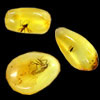
Amethyst
Strong heat may turn these gems colorless. Abrupt temperature changes may cause fractures. Boiling and ultrasonic cleaning are generally safe, but use caution. Fading in Sunlight.
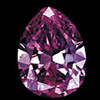
Aquamarine
Liquid inclusions may burst upon heating. Hydrofluoric acid can cause damage. To be safe, do not boil; use ultrasonic cleaning with caution if inclusions are present. Fading in Sunlight.
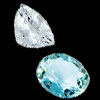
Chrysoberyl (Alexandrite & Cat's Eye)
Stable when exposed to heat, light, and chemicals. However, since high value is involved, use caution and avoid boiling and ultrasonic cleaning when possible. Fading in Sunlight.
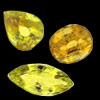
Citrine
Strong heat may turn these gems colorless. Abrupt temperature changes may cause fractures. Boiling and ultrasonic cleaning are generally safe, but use caution. Fading in Sunlight.
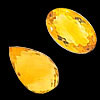
Diamond
Generally safe to boil and use ultrasonic cleaning. With stones of high value, some caution may be prudent.
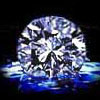
Emerald
As a general rule, treat with extreme care. Do not boil or use ultrasonic cleaning. Use only warm, soapy water to clean. Fading in Sunlight.
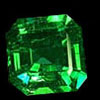
Garnet
Concentrated hydrofluoric acid may cause damage. Abrupt temperature changes likely to cause fractures. Generally safe to boil, but avoid thermal shock. Use care with ultrasonic cleaning.
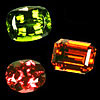
Iolite
Acids can cause damage. Relatively safe to boil and to use ultrasonic cleaning; however be aware of existing cleavages. Fading in Sunlight.
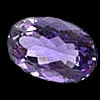
Jadeite and Nephrite
Avoid strong solvents, acids, high heat, and strong sunlight. Jadeite is very tough and generally will withstand boiling and ultrasonic cleaning. Be aware that wax- coated jade could be affected. Fading in Sunlight.
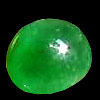
Opals
Avoid all solvents and acids. Opals are highly sensitive to heat. Do not boil or use ultrasonic cleaning. Fading or Crazing in Sunlight.
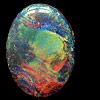
Pearls
Pearls are attacked by all acids. Avoid any type of solvent or acid, including perfume, hair spray, and perspiration. Do not boil or use ultrasonic cleaning. Fading or Crazing or Yellowing in Sunlight.
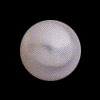
Peridot
Uneven or sudden heat may result in fracturing or complete breakage. Hydro- chloric acid can cause damage; sulfuric acid can easily damage. Do not boil and use caution with ultrasonic cleaning. Fading in Sunlight.

Ruby
Generally safe to boil and use ultrasonic cleaning. With stones of high value, some caution may be prudent.

Sapphire
Generally safe to boil and use ultrasonic cleaning. With stones of high value, some caution may be prudent.
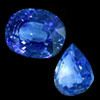
Spinel
Light gems may fade under intense heat. Boiling is generally safe. Use caution with ultrasonic cleaning.
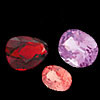
Tanzanite
Very extreme temperature change may cause fracturing. Hydrochloric and hydrofluoric acid can cause damage. Do not boil or use ultrasonic cleaning. Fading in Sunlight.
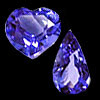
Topaz
Although boiling is possible, it is not recommended. Also use caution with ultrasonic cleaning. Fading in Sunlight.
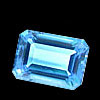
Tourmaline
Sudden temperature changes may cause fracturing. Although boiling is possible, it is not recommended, since thermal shock can cause damage. Use caution with ultrasonic cleaning.
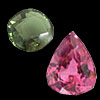
Zircon
Avoid boiling, but ultrasonic cleaning is safe. Gems abrade easily. Heat and light may affect color in some gems. Fading in Sunlight.
